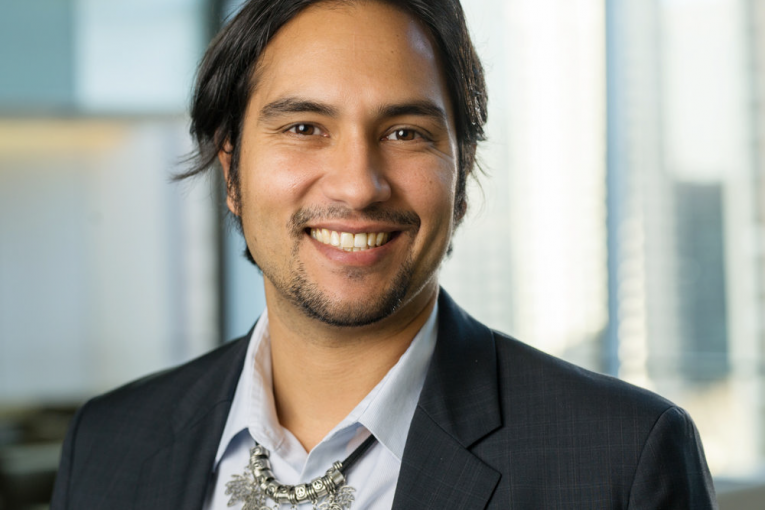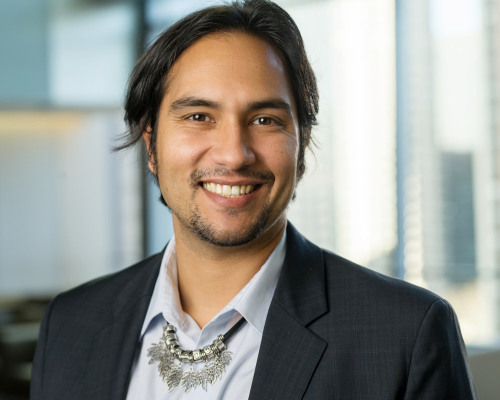

By Janos Marton
James Berish was the first person in North Carolina to go through a restorative justice process for a felony offense. In 2017, after accidentally shooting his gun through his apartment floor and hitting a sleeping child in the room below, he was allowed to participate in a restorative justice process that diverted him from facing up to ten and a half years in prison. He, along with the child who was wounded by the gunshot and her parents, engaged in story-telling and identified the harms he had caused. Berish learned about the child he hurt and the anxiety her parents were going through as a result. He expressed his remorse and committed to repair the harm. They all agreed that Berish would pay restitution for medical fees, give speeches on gun safety, and donate art supplies to other child victims of gun violence.¹ Judge O’Neal, who presided over his sentencing, remarked, “This is why I went to law school, this moment … criminal justice is changing. There is a sea change coming and this process (restorative justice) is part of it.”²
I am running for Manhattan District Attorney to transform our criminal legal system, and that includes bringing restorative justice to the borough. Restorative justice will be a part of my office’s plan to evolve from a ‘tough-on-crime’ philosophy that devastates neighborhoods to an approach that addresses the root causes of harm, without relying on jails and prisons.
Campaign Statement of Values
In order for justice to be served, the values of a District Attorney’s office must be in line with the values of the community. My values are rooted in freedom, compassion, equity, and opportunity.
There is perhaps no more universal human desire than freedom. Our nation’s history has been defined by enslaved people and immigrants, such as my parents, risking everything in freedom’s pursuit.³ Every time a person is locked in a cage and stripped of their freedom, we have collectively failed as a society. That is why the deprivation of liberty will always be used as a last resort in my office.
Our office will pursue compassion. Anyone who has felt the cold bars of a prison cell, watched a prison gate close behind them, or spoken to a loved one through  Plexiglas knows that sentencing a person to prison in New York puts them at risk of physical violence and psychological trauma, setting them deeper down a dark path rather than rehabilitating them. Our response to people who have been hurt must always honor their experiences, center their needs, and seek solutions that make them feel whole again. The response to those who have caused harm must always be focused on community-based rehabilitative options that are not reliant on jails and prisons.
Plexiglas knows that sentencing a person to prison in New York puts them at risk of physical violence and psychological trauma, setting them deeper down a dark path rather than rehabilitating them. Our response to people who have been hurt must always honor their experiences, center their needs, and seek solutions that make them feel whole again. The response to those who have caused harm must always be focused on community-based rehabilitative options that are not reliant on jails and prisons.
Our office will always pursue equity. Racial and economic injustices are present throughout our city, most glaringly within our criminal justice system; 87% of New York City jail detainees are Black or Hispanic.⁴ When we rely on policing, criminalization, and incarceration to solve our problems, we are often punishing those already experiencing systemic oppression, a chronic lack of resources, income inequality, and other socioeconomic insecurities.
We believe in opportunity. Our office will support programs that provide treatment and invest in health, housing, educational, and economic guidance to create second chances for those caught up in the criminal justice system. This includes developing, implementing, and supporting restorative justice practices that divert people from interacting with the criminal legal system while holding people accountable and interrupting cycles of violence.
Restorative Justice: History, Explanation, and Process
Restorative justice (“RJ”) has been gaining popularity throughout the U.S. and in criminal justice systems in the world. However, it is by no means a new process and is often misunderstood. Indigenous peoples have used restorative justice and other community-based conflict reconciliation processes for centuries across the world. Indigenous leaders, such as Robert Yazzie of the Navajo Nation,⁵ have taught restorative justice techniques to some of today’s leading facilitators like sujatha baliga of California.⁶
Restorative Justice is a framework for handling wrongdoing that centers healing and accountability in repairing harm. RJ focuses on the needs of those harmed (normally named ‘victims’) and the responsibility of respondents (normally named ‘offenders’ or ‘perpetrators’) to repair what they have done. Rather than view wrongdoing as an infraction solely against the state, RJ looks at wrongdoing as a violation between people and relationships. Those who have caused harm should take responsibility and hold themselves accountable for those they have hurt.
In a RJ process, all of the parties involved, including those harmed and their supporters, respondents, and impacted community members, work together to come up with a mutually constructed agreement of what the respondent can do to repair the harm. Contrary to punitive justice, restorative justice is not entirely concerned with what rules were broken or how to punish those who break them, but instead focuses on healing and providing support for all those impacted by the incident.
Restorative justice process requires that trust be built between facilitators and participants. After this foundation is established, both the respondent and harmed party must consent without any coercion to be a part of the process.
Once in the room, participants, along with their support people, are guided by trained facilitators, ideally facilitators familiar with the participants communities and identities. The process generally involves: story-telling of what happened → identifying harms to repair → mutually constructed agreements → follow-ups. Some common questions asked in a restorative justice process are: How are you feeling about the situation that took place? How are you feeling now? What do you need from the respondent in order to move forward right now and for your long-term healing process? Since each RJ case looks different, one session is often not enough time to go through these steps. Therefore, the process continues with as many sessions as needed until agreements are inclusively decided upon and signed off by all of the participants. Follow-ups are conducted to make sure participants actively work towards the agreements.
Restorative Justice as an Empowering and Holistic Justice Model
Our adversarial criminal justice system does little to prevent violence and can actually exacerbate it. Furthermore, it often fails to consider the needs or voices of survivors. In a survey of crime survivors, participants preferred alternatives to incarceration over jail and prison.⁷ They cited the inherently violent nature of prison and the fact that incarceration can make people more likely to commit crimes in the future as reasons for preferring alternatives.⁸
In contrast, RJ centers the needs of survivors and lowers recidivism. In an evaluation of Alameda County’s youth restorative justice diversion program between 2012–2014, youth who went through the restorative justice program were 44% less likely to experience recidivism than those who were prosecuted through the juvenile legal system.⁹
These results should not surprise us. Restorative justice is a healing-centered approach that treats people as complex human beings who are capable of hurting each other, but who also have the capacity to change. Through an RJ lens, we understand that causing harm does not inherently make someone a bad person, but that when damage occurs, its repair must be facilitated. Often, unaddressed hurt manifests in future cycles of harm — or as we conventionally call it, crime recidivism. I am committed to ending cycles of harm by allowing restorative justice as an option to consenting parties.
RJ’s use and popularity is already growing, including here in New York where the organizations Common Justice currently serves Brooklyn and Bronx residents,¹⁰ and the Center for Court Innovation’s Red Hook Peacemaking Program works with individuals in Brooklyn.¹¹ RJ has also been gaining wide traction in schools throughout the city.¹²
The current Manhattan D.A. announced that his office intends to offer restorative justice as a diversion for misdemeanor cases and as an option for violent crimes when combined with a jail sentence or “alternative to incarceration disposition” beginning this year.¹³ It is difficult to call a process restorative if it is an add-on measure to incarceration, especially if it is being yielded by the prosecutorial power of the state. We have yet to see a full policy for what the RJ program out of the current D.A. office will look like, including how the D.A. is ensuring the voluntary consent, uniqueness, and confidentiality of all participants in each restorative justice process. Still, we are cautiously optimistic about this policy change, even as we recommend something far more robust.
In this moment, when the public is beginning to reckon with the failure of the NYPD and the criminal legal system to keep New Yorkers safe, RJ offers a roadmap for an alternative approach to public safety that does not depend on the policing, criminalization, and incarceration of New Yorkers.
Implementing Restorative Justice at the Manhattan DA’s Office
As always, our campaign has consulted with communities most impacted, policy experts, and a diverse set of professionals to generate the following proposals.
Proposal 1: Implement Restorative Justice Pre-Charge — Without Exceptions Based on Offense
As Manhattan DA, I will allow cases classified as both ‘non-violent’ and ‘violent’ to be eligible for restorative processes pre-charge, so long as all parties voluntarily consent. Restorative justice must not exacerbate the dangerous dichotomy between “non-violent” and “violent” offenses, wherein “violent offenders” are viewed as unworthy of receiving the benefits of reform. There is no offense that will be categorically barred from a restorative justice process if parties prefer to go this route.
To date, Common Justice is the only restorative justice organization in the U.S. that has partnered with local prosecutors to receive violent felony cases from adult respondents for diversion. This is a model we should learn from as we cultivate relationships with our community partners. Our office understands that the power of restorative justice lies in its ability to break-down conflict and facilitate open and honest dialogue to understand how people were hurt so that there are clear steps of what is needed to heal. Therefore, people who commit violent offenses must be allowed in this process if we are to experience the full transformative potential of restorative justice.
Proposal 2: Refer Cases to Community-Based Practitioners for RJ Processes
As District Attorney, I will establish relationships with and refer cases to experienced community-based restorative justice organizations and practitioners for RJ processes. Our campaign believes that restorative justice programs are most effective when conducted by community-based groups rather than solely through the DA office. Participants, especially respondents, may feel they cannot be as open in conversation or claim their agency in the inclusive decision-making of mutual agreements if they are in the presence of law enforcement.
Community-based organizations have more trust from the communities they serve and know how best to conduct a restorative justice conference. Our office will handle the legal and administrative side of the processes in constant communication with our partners, while the actual conferences and overseeing of agreements will be handled by the experts of their own communities.
Restorative justice based non-profits often cite the lack of consistent funding as the main source of anxiety in not knowing if they will be able to continue functions each year.¹⁴ In the short-term I will allocate funding from the DA’s office to support the collaborative efforts between our office and willing community-based restorative justice partners to conduct RJ processes, while supporting those organizations in their efforts to attain sustainable fundraising sources from outside the criminal court system.
Our office will also implement a screening process that decides which cases may be a good fit for restorative justice while educating all respondents, harmed parties, and defense attorneys that they have the freedom and power to choose restorative justice for their cases.¹⁵
Once a case is screened and accepted to go through the restorative justice process, we will refer it to one of our local partner organizations; and when the respondent completes the terms of their agreement, the case will be declined with no record of formal charges.
Proposal 3: Meet the Needs of all Participants
Our office is committed to doing all that it can to ensure a successful restorative justice process. Inevitably, some restorative justice processes will not succeed due to issues arising within the dialogues, failure to complete the terms of the agreement, or other reasons. When our partners and office decide that we can no longer move forward with an RJ process, we will work together to meet the needs of participants and determine what interventions are needed to get the process back on track. In the event that a restorative justice process must be cut short and returned to our office, we will prohibit the introduction of any information shared during the process as evidence in subsequent criminal proceedings.
Conclusion
For all of its promise, widespread institutional use of restorative justice is new, so it must be handled with a special level of care, remaining ever mindful of the balance of being community-led, while maintaining accountability in our often binary criminal legal system.
Restorative justice will be a part of our office’s broader vision of what a transformed Manhattan justice system looks like. As an office, we will always listen to survivors of crime, intervene in disrupting cycles of harm, and center healing in our justice work.
Finally, we know that the solutions to many underlying harms in society cannot be solved by the criminal legal system. Rather than increasing police budgets, we should divest from the institutions that routinely harm our communities and invest in what keeps our communities safe: affordable housing, debt-free education, expanded healthcare, quality jobs, and decriminalizing drug use and sex work. Restorative justice is a part of this larger transformative vision we are pushing forward to get closer to living in a city where all residents can feel safe walking our streets.
Janos Marton is a candidate for Manhattan District Attorney.
To sign up for our new newsletter – Everyday Injustice – https://tinyurl.com/yyultcf9





